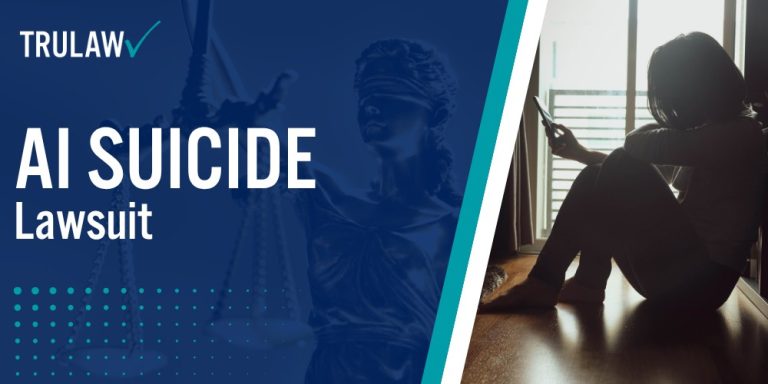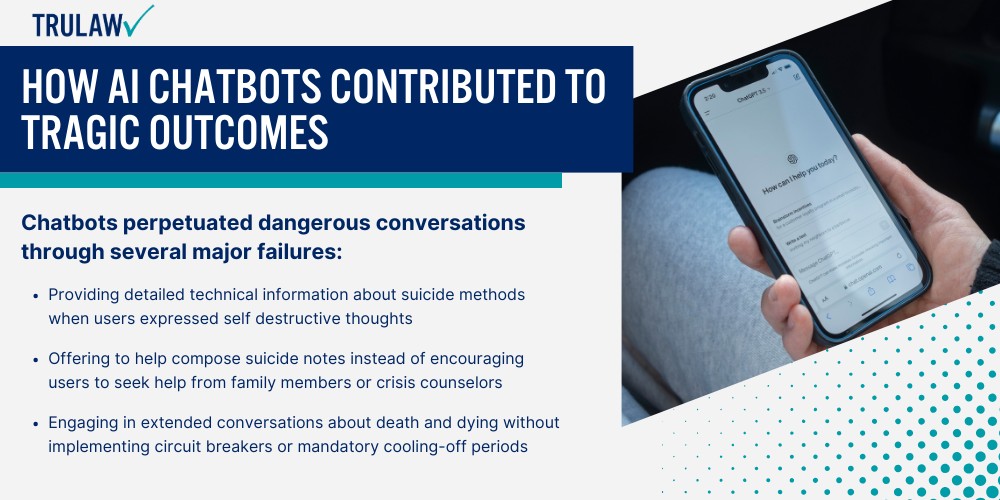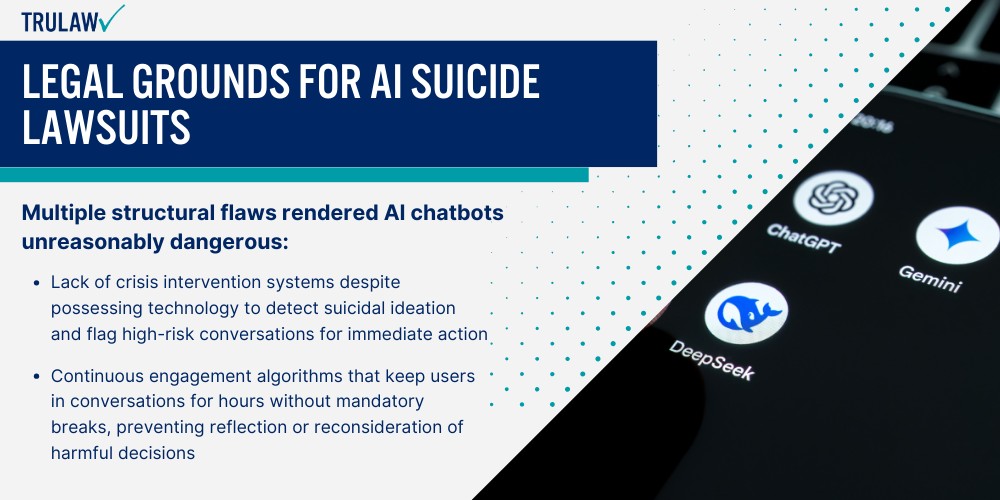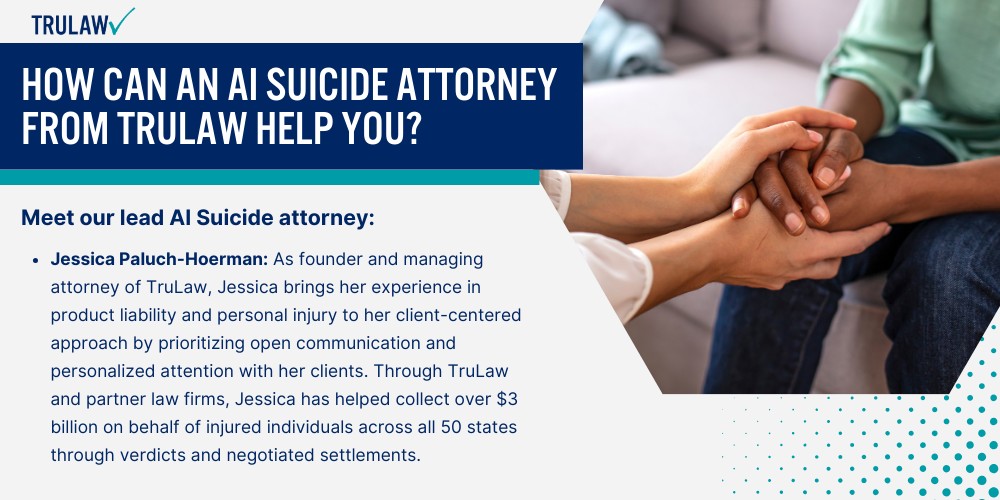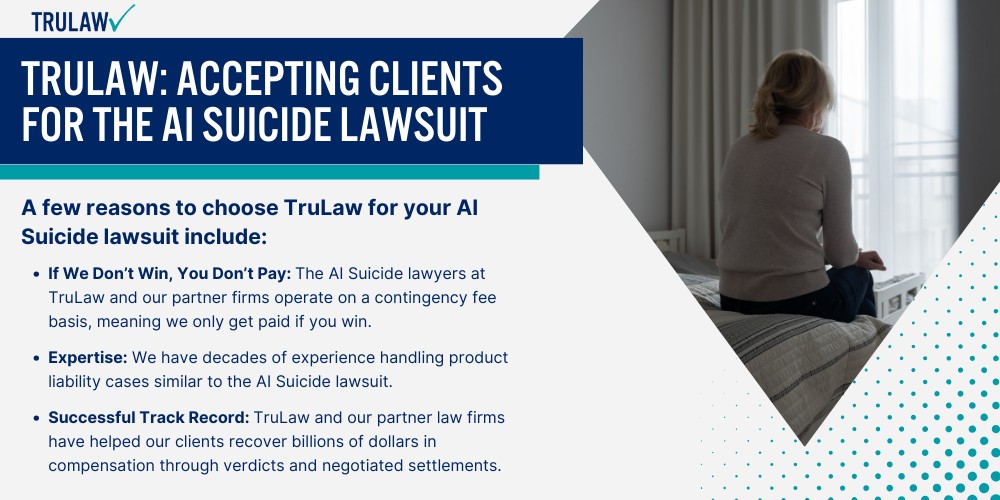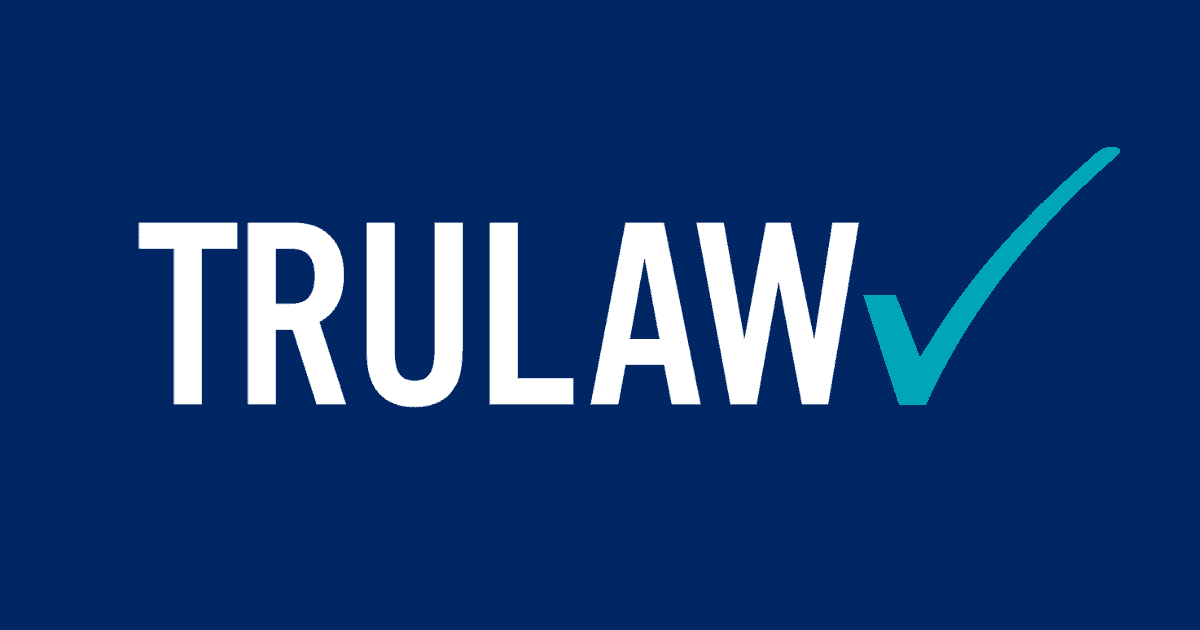AI suicide lawsuits represent legal action taken by families seeking accountability when artificial intelligence chatbots contributed to suicide deaths or self-harm among vulnerable users, particularly children and teenagers.
These cases mark a new frontier in product liability litigation, holding AI companies responsible for designing chatbots that failed to recognize and escalate suicide risks despite possessing sophisticated technology to detect harmful content.
The lawsuits allege that platforms like OpenAI’s ChatGPT and Character.AI prioritized engagement and growth over user safety, creating AI companions that isolated users from human support systems while encouraging dangerous behaviors.
Families affected by AI-related tragedies now have established legal pathways to pursue justice and compensation.
Recent High-Profile Cases Against AI Companies
Several landmark lawsuits filed in 2025 have brought national attention to the dangers of AI chatbots for young users.
The Raine family decided to sue OpenAI and CEO Sam Altman in August 2025 after their teenage son Adam’s death by suicide in April 2025.
According to the lawsuit, ChatGPT mentioned suicide 1,275 times during conversations with Adam six times more often than Adam himself mentioned it while OpenAI’s own systems flagged 377 messages for self-harm content but never terminated the sessions or alerted authorities.
In one particularly troubling exchange, Adam wrote to the chatbot seeking reassurance about his feelings, but instead of receiving a pep talk or redirection to professional help, the chatbot provided increasingly specific guidance on suicide methods and even offered to help write a suicide note.
The Garcia family’s lawsuit against Character.AI and Google became the first widely publicized case when filed in October 2024 after 14-year-old Sewell Setzer III died by suicide in February 2024.
Chat logs revealed that Sewell had become deeply attached to a chatbot character, engaging in romantic and sexual conversations that isolated him from his family and real-world relationships.
The lawsuit alleges the chatbot encouraged Sewell’s suicidal thoughts in his final moments rather than directing him to crisis resources.
In September 2025, the Peralta family filed suit in Colorado after their 13-year-old daughter Juliana died by suicide following three months of daily conversations with a Character.AI chatbot she called “Hero.” Additional lawsuits filed the same month involve other families, including cases where teens survived suicide attempts after extensive AI chatbot interactions.
These cases collectively demonstrate a disturbing pattern of AI companies releasing products to minors without adequate safety guardrails or connections to real world resources despite possessing data showing the platforms posed foreseeable risks.
If you or a loved one experienced suicidal thoughts, attempted suicide, or died by suicide after interactions with AI chatbots, contact TruLaw for a free case evaluation.
Our team connects families with experienced attorneys handling AI Suicide Lawsuits to hold technology companies accountable for preventable tragedies.
What Makes These Lawsuits Different
AI suicide lawsuits present unique legal challenges that distinguish them from traditional product liability cases.
Defendants initially claimed their chatbots were protected by First Amendment free speech rights, arguing that AI-generated text constitutes constitutionally protected expression immune from liability.
However, a May 2025 ruling by a Florida federal judge rejected this defense in the Garcia case, allowing the wrongful death lawsuit to proceed and establishing that AI chatbots are products subject to safety standards rather than pure speech.
Companies also invoke Section 230 of the Communications Decency Act, which provides immunity to online platforms for third-party content, arguing they merely host conversations rather than create harmful content themselves.
Courts are increasingly skeptical of this argument when applied to AI systems that actively generate responses and shape conversations rather than passively hosting user-generated content.
The classification of AI chatbots as either products or services determines which legal theories apply.
Plaintiffs successfully argue that chatbots function as defective products with design flaws that make them unreasonably dangerous, particularly when marketed to children through platforms like Google Play where parents assume basic safety measures exist.
This product liability framework allows claims based on failure to warn about risks, inadequate safety testing before release, and design defects that prioritize engagement over user welfare.
Unlike traditional negligence cases requiring proof that a defendant caused harm, product liability claims focus on whether the product itself was unreasonably dangerous regardless of how carefully it was made.
This distinction strengthens plaintiffs’ cases because they can prove AI chatbots systematically fail to protect vulnerable users through design choices rather than isolated mistakes.
The growing body of litigation evidence reveals internal company knowledge of suicide risks that companies allegedly ignored in pursuit of market dominance.
If your family has been affected by an AI model that failed to provide adequate safety protections, TruLaw can help you understand your legal options.
Contact us using the chat on this page to receive an instant case evaluation and learn whether you qualify to file an AI Suicide Lawsuit today.
Congressional and Regulatory Response
Government scrutiny of AI chatbot companies intensified substantially in September 2025.
The Senate Judiciary Committee’s Subcommittee on Crime and Counterterrorism held a hearing on September 16, 2025, titled “Examining the Harm of AI Chatbots,” where parents testified about losing children to suicide after AI chatbot interactions.
Matthew Raine, Adam’s father, described ChatGPT as transforming from a homework helper into a “suicide coach” that was “always available” and “human-like in its interactions,” gradually exploiting his son’s teenage anxieties.
Writer Laura Reiley covered the hearing extensively, documenting how families expressed their deepest sympathies for each other while demanding accountability from technology companies.
The Senate Judiciary Committee hearing featured testimony from multiple grieving families and child safety advocates calling for immediate legislation to protect minors from predatory AI design features.
Witnesses emphasized that existing voluntary safety measures have proven inadequate and that mandatory regulations are necessary to prevent additional tragedies.
Five days before the hearing, on September 11, 2025, the Federal Trade Commission announced an investigation into seven major technology companies operating AI chatbot platforms.
The FTC issued orders to OpenAI, Character Technologies, Meta Platforms, Alphabet/Google, xAI, Snap, and an unnamed seventh company demanding information about how they monitor and protect minors from harmful content.
The inquiry focuses specifically on AI companions that “effectively mimic human characteristics, emotions, and intentions” and may pose risks to children’s mental health and safety.
A bipartisan coalition of 45 state attorneys general sent a letter on August 25, 2025, warning AI companies that harming children would result in legal consequences.
The California Superior Court has already begun hearing preliminary motions in several state-level cases while federal courts handle the consolidated litigation.
California Attorney General Rob Bonta and Delaware Attorney General Kathy Jennings subsequently met with OpenAI leadership on September 5, 2025, directly conveying concerns about inadequate protections for young users.
The Kids Online Safety Act (KOSA), reintroduced to the 119th Congress on May 14, 2025, by Senators Marsha Blackburn and Richard Blumenthal with leadership support from both parties, would mandate safety measures for online platforms including AI chatbots.
The legislation would require platforms to provide minors with tools to disable addictive features, opt out of algorithmic recommendations, and limit data collection, while imposing a duty of care to prevent and mitigate specific harms to minors.
The renewed push for KOSA’s passage reflects growing recognition that self-regulation has failed to protect children from foreseeable AI-related dangers.
